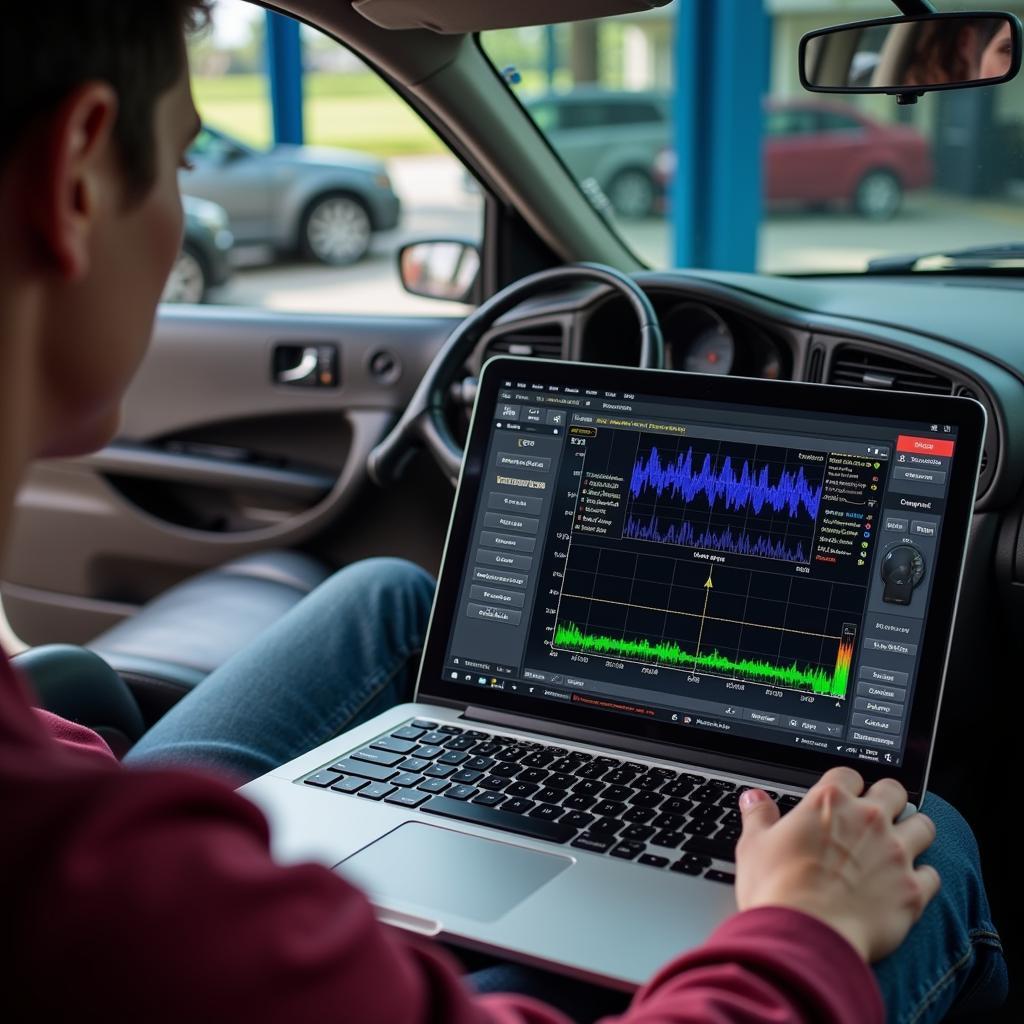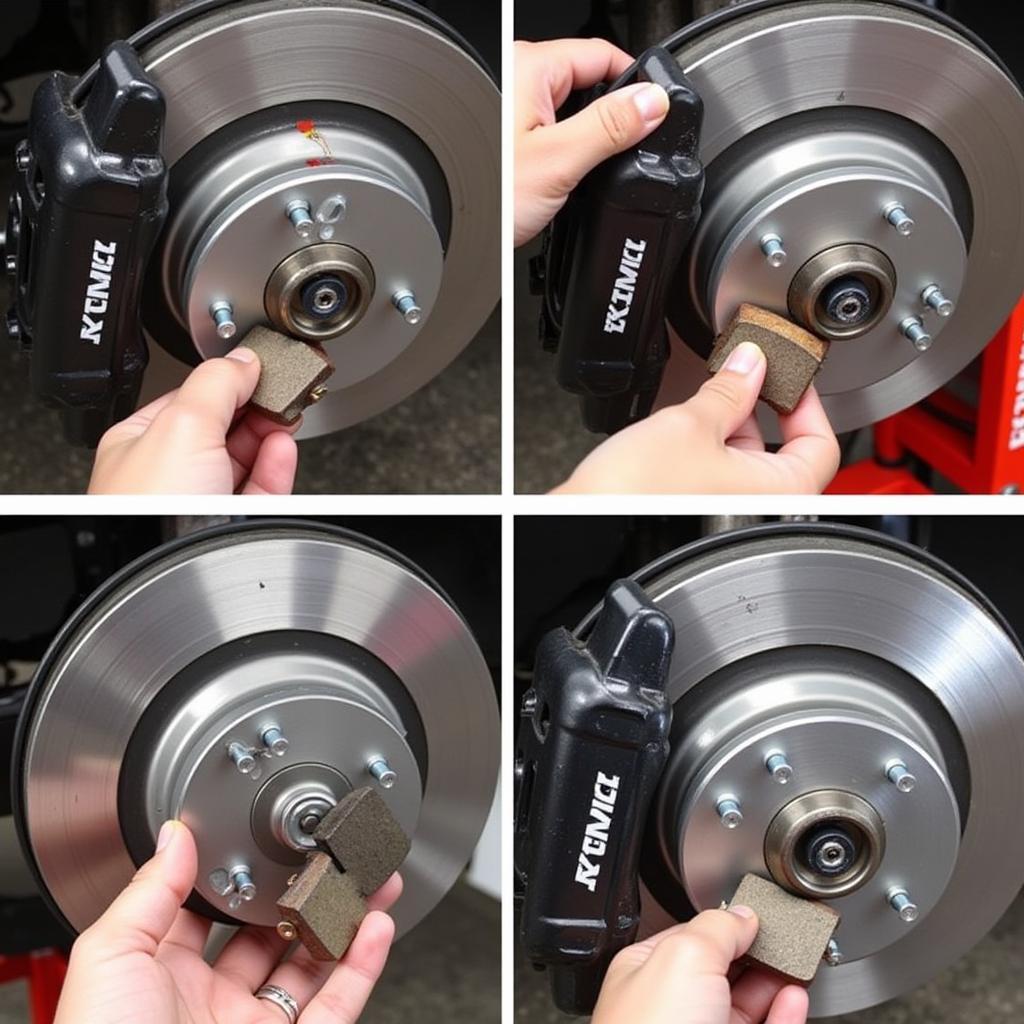The 2005 Buick Century ABS brake warning light can be a frustrating issue. This article provides comprehensive guidance on diagnosing and resolving problems related to the ABS light in your 2005 Buick Century, offering solutions ranging from simple DIY fixes to more complex repairs requiring professional assistance.
Understanding why your ABS light is on is crucial for maintaining safe braking performance. The Anti-lock Braking System (ABS) prevents wheel lockup during hard braking, allowing you to maintain steering control. A lit ABS warning light signals a potential problem within the system. This could range from a minor sensor malfunction to a more serious issue with the ABS module itself. Ignoring this warning could compromise your safety on the road.
Common Causes of the ABS Light in a 2005 Buick Century
Several factors can trigger the ABS warning light. Identifying the root cause is the first step towards an effective solution. Here are some common culprits:
- Low Brake Fluid: Insufficient brake fluid can disrupt the ABS system’s hydraulic pressure, triggering the warning light.
- Faulty ABS Wheel Speed Sensors: These sensors monitor the rotational speed of each wheel. A malfunctioning sensor can send incorrect signals to the ABS module.
- Damaged ABS Wiring: Corroded or damaged wiring can interfere with communication between the ABS components.
- Malfunctioning ABS Module: The ABS module is the system’s brain. A faulty module can lead to various ABS issues, including a persistent warning light.
- Blown ABS Fuse: A blown fuse can disrupt power to the ABS system.
Diagnosing the Problem: A Step-by-Step Guide
- Check the Brake Fluid Level: Inspect the brake fluid reservoir. If the level is low, top it off with the correct DOT 3 or DOT 4 brake fluid specified in your owner’s manual.
- Visually Inspect the ABS Wiring: Look for any signs of damage, corrosion, or loose connections to the ABS components, including the wheel speed sensors.
- Check the ABS Fuse: Locate the ABS fuse in the fuse box and check if it’s blown. Replace it with a new fuse of the same amperage if necessary.
If these basic checks don’t resolve the issue, more advanced diagnostics may be required. These often involve using a diagnostic scanner to read the ABS trouble codes stored in the vehicle’s computer.
Troubleshooting with a Diagnostic Scanner
A diagnostic scanner can pinpoint the specific fault within the ABS system. It retrieves diagnostic trouble codes (DTCs) which correspond to specific components or circuits. This allows for targeted repairs.
Connecting a scanner to your car’s OBD-II port lets you read these codes. Each code provides clues about the location and nature of the problem. This saves time and reduces guesswork. For example, a code related to a specific wheel speed sensor indicates a likely issue with that sensor.
Remote Diagnostics and Programming: A Modern Approach
Remote diagnostics and programming offer a convenient and efficient way to address ABS issues. Qualified technicians can access your vehicle’s computer remotely, diagnose the problem, and even reprogram certain modules without physical access to the car. This can be particularly helpful for resolving software-related issues within the ABS module.
 Remote Diagnostics and Programming for a 2005 Buick Century
Remote Diagnostics and Programming for a 2005 Buick Century
Similar to how do anti theft clubs work, remote diagnostics leverages technology for efficient solutions.
When to Seek Professional Help
While some ABS issues can be addressed with DIY fixes, others require professional expertise. If you’re uncomfortable working on your car’s braking system or if the problem persists after basic troubleshooting, it’s best to consult a qualified mechanic. They have the tools and knowledge to diagnose complex ABS problems accurately.
Preventing Future ABS Issues
Regular maintenance can help prevent ABS problems. This includes routine brake fluid flushes, inspections of the ABS wiring and components, and prompt attention to any warning lights.
Just as considering are anti theft devices for cars worth it, regular maintenance is a crucial investment.
Conclusion
The 2005 Buick Century ABS brake warning light should never be ignored. Addressing the underlying issue promptly ensures your safety on the road. By understanding the common causes, following the diagnostic steps, and seeking professional help when necessary, you can keep your ABS system functioning correctly.
FAQ
- What does the ABS light mean? The ABS light indicates a potential problem with the Anti-lock Braking System.
- Can I drive with the ABS light on? You can still drive, but your ABS may not function properly in emergency situations. Have it checked as soon as possible.
- How much does it cost to fix an ABS light? The cost varies depending on the cause. It could range from a simple fuse replacement to a more expensive module repair.
- How do I reset the ABS light? Fixing the underlying problem usually resets the light. In some cases, a diagnostic scanner may be needed to clear the codes.
- Can low tire pressure cause the ABS light to come on? While not a direct cause, significantly uneven tire pressure can sometimes trigger ABS issues.
- Is it safe to ignore the ABS light? No, it’s not safe. A functioning ABS is crucial for safe braking, especially in slippery conditions.
- How often should I check my brake fluid? Check your brake fluid level at least once a month.
Understanding more about car security systems, like how does the anti theft security system works, can also be beneficial.


